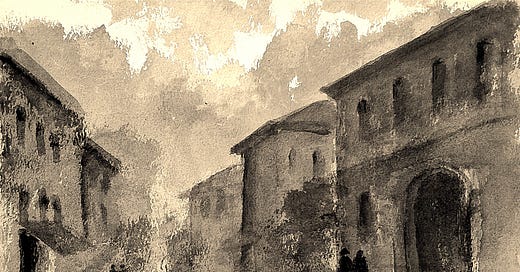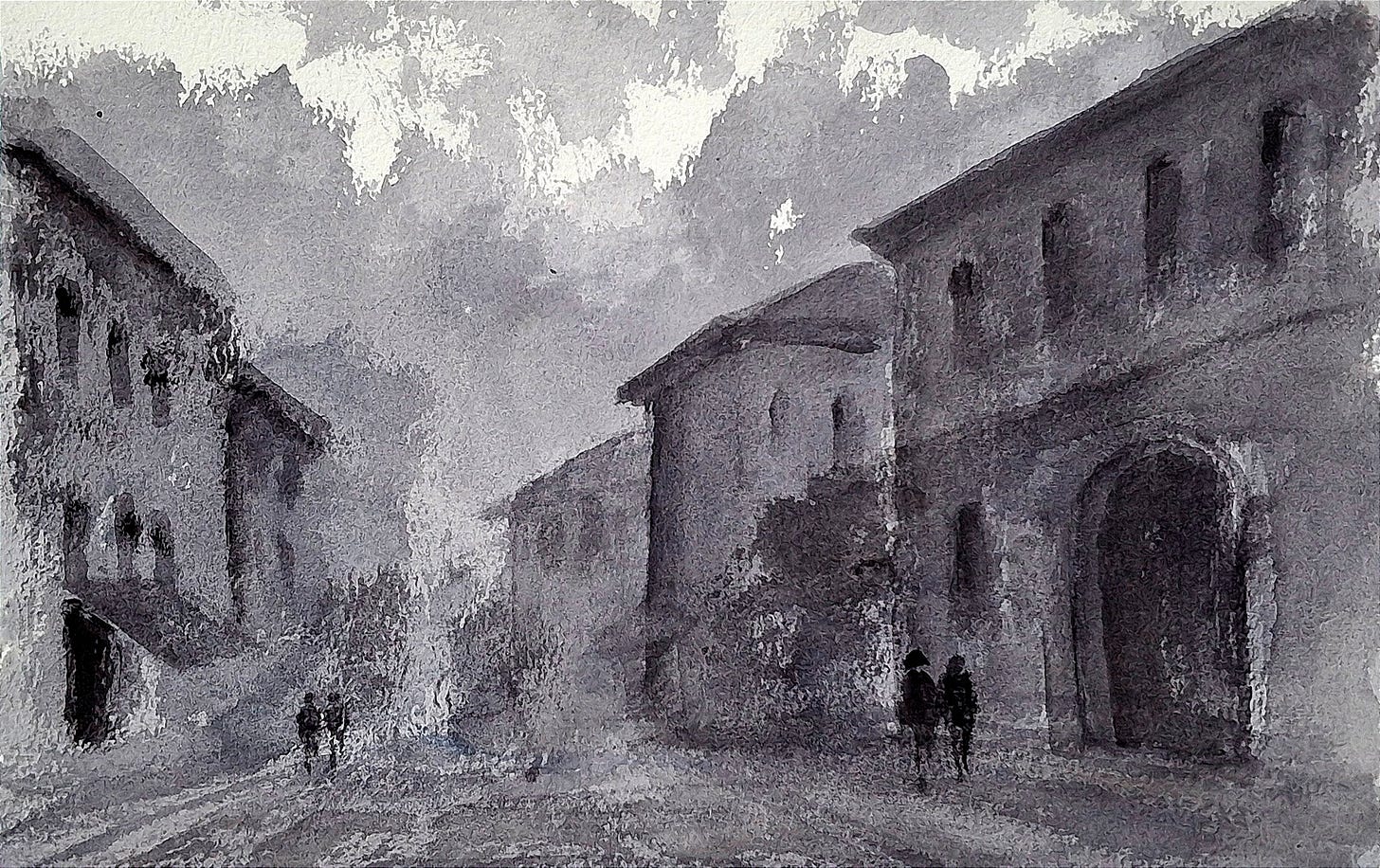Exploring Watercolour Monochrome Painting
Discover the Power of One Colour to Elevate Depth, Emotion, and Mastery in Your Art
Introduction: Less Colour, More Expression
In a world dazzled by colour, there’s something profoundly elegant—and deeply expressive—about painting in monochrome. Whether you're a seasoned artist or a curious beginner, monochrome watercolour painting offers an extraordinary opportunity to understand value, form, and composition using a single hue.
This minimalist approach teaches you to see beyond colour, and focus on the essentials—light, shadow, texture, and contrast. Surprisingly liberating, it sharpens your skills and gives your artwork a sense of timeless beauty.
In this blog, we’ll dive into the technique, purpose, and power of monochrome watercolour painting, and how you can use it as a foundation for artistic mastery.
1. What is Monochrome Painting in Watercolour?
A monochrome painting is created using only one colour, typically with varying levels of water dilution to achieve different values, from lightest tints to deepest shades.
Instead of relying on a range of colours to convey depth or emotion, you work with:
✅ Value (light to dark)
✅ Tone and contrast
✅ Transparency and layering
✅ Brush technique and edge control
💡 One colour becomes your entire voice—and surprisingly, it speaks volumes.
2. Why Paint in Monochrome?
✔ Develop Value Sensitivity – You learn to judge lights and darks with precision
✔ Improve Composition – Without colour, structure becomes your hero
✔ Enhance Brush Control – Every stroke must do more with less
✔ Strengthen Water Control – You practice creating a full tonal range through dilution
✔ Focus on Emotion and Mood – The subtlety of tone adds atmosphere
🎯 Monochrome is an excellent practice method and a stunning style in itself.
3. Choosing the Right Colour for Monochrome Work
Here are some popular pigments often used for monochrome studies:
🎨 Payne’s Grey – Cool, neutral, dramatic
Perfect for: Urban sketches, nightscapes, architectural studies
🎨 Sepia – Warm, earthy, nostalgic
Perfect for: Portraits, heritage subjects, traditional landscapes
🎨 Indigo – Rich, atmospheric, expressive
Perfect for: Sky studies, water scenes, mood-rich compositions
🎨 Burnt Sienna – Rustic, warm, textured
Perfect for: Rural landscapes, textured studies
💡 Pick a pigment with a wide tonal range and good flow in water.
4. Materials You’ll Need
A good round brush with a sharp point
100% cotton watercolour paper (cold-pressed or hot-pressed)
Your chosen monochrome pigment
Two containers of water (one for clean water, one for rinsing)
Tissue or cloth for blotting
5. Step-by-Step: How to Create a Monochrome Watercolour Painting
🖌️ Step 1: Choose Your Subject
Pick a subject with strong values—like an old building, a tree, a human face, or a rocky landscape.
🖌️ Step 2: Do a Value Sketch
Outline major shapes. Plan where your darkest and lightest areas will go.
🖌️ Step 3: Mix Value Variations
Create a value scale with your pigment—from light wash to concentrated mix.
🖌️ Step 4: Paint Light to Dark
Start with your lightest tones. Let layers dry before applying mid and dark tones. This builds depth.
🖌️ Step 5: Add Contrast and Texture
Use dry brush, lifting, or glazing techniques for finishing details and emphasis.
💡 Remember: control water, not colour—that’s the essence of monochrome painting.
6. Best Subjects for Monochrome Painting
✔ Architecture – Emphasizes structure and form
✔ Portraits – Adds drama and mood with shadows and highlights
✔ Heritage structures – Perfect for timeless, sepia-toned renditions
✔ Trees and foliage – Study shapes and textures with minimal distraction
✔ Still life or sculpture – Ideal for value and shadow practice
7. Advanced Monochrome Techniques to Explore
✨ Glazing – Layering diluted pigment to build volume and mood
✨ Negative Painting – Carving out shapes using darker values around them
✨ Dry Brush – Add rough textures and surface variety
✨ Lifting – Lighten areas by removing pigment with a damp brush or tissue
💡 With just one colour, your technique becomes your greatest tool.
8. Combining Monochrome with Colour (Optional Approach)
You can also use monochrome as a first layer before applying limited colour glazes, enhancing form and value without overpowering the composition.
Final Thoughts: Simplicity with Depth
Monochrome painting is a timeless practice that sharpens your eyes, steadies your hand, and deepens your artistic voice.
✔ It removes complexity
✔ Encourages observation
✔ Builds your control of values
✔ Helps you connect with the essence of your subject
Whether as a study or a finished style, monochrome watercolour is a profound and poetic experience every artist should explore.
🎨 Call to Action: Join My Watercolour Mastery Community!
Want to master the foundations of value, tone, and expression through powerful techniques like monochrome painting?
Join my Watercolour Mastery Community, where you’ll receive:
✅ Step-by-step lessons in foundational and advanced techniques
✅ Guidance on brush control, water control, and values
✅ Supportive feedback and creative challenges
✅ Access to exclusive tutorials and resources
📩 Subscribe to my blog today to explore the elegant world of watercolour and stay updated on my upcoming training programs.
✨ Let’s make magic with just one colour—and endless creative vision. 🎨🖌️








Those paintings are lovely!
Das Malen in Sepia-Tönen ergibt für mich etwas Magisches auf dem Papier. Ich finde, es regt die Phantasie mehr an mehr beim Betrachten.